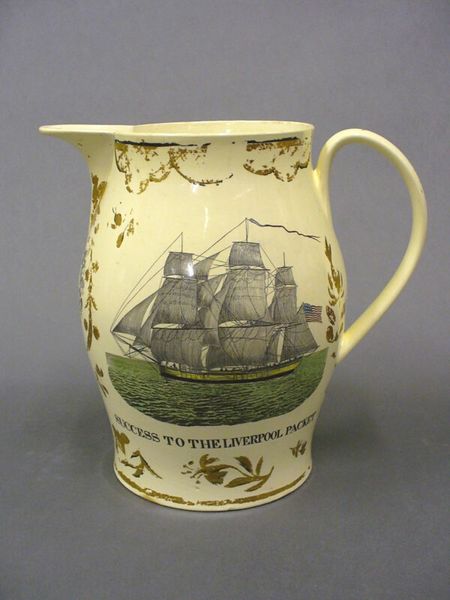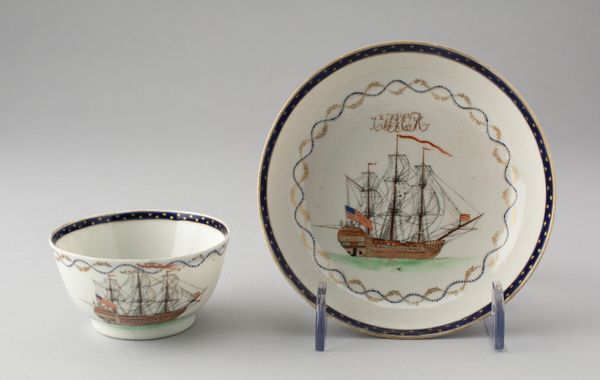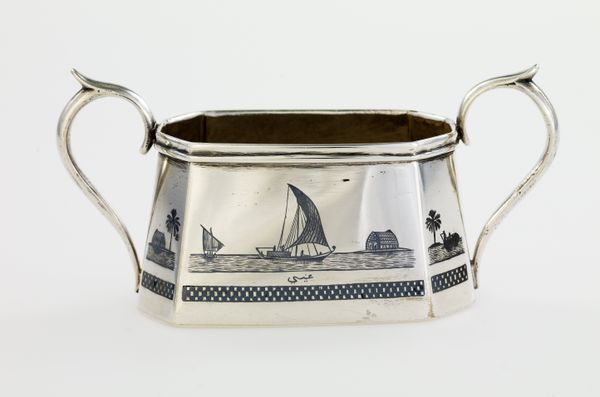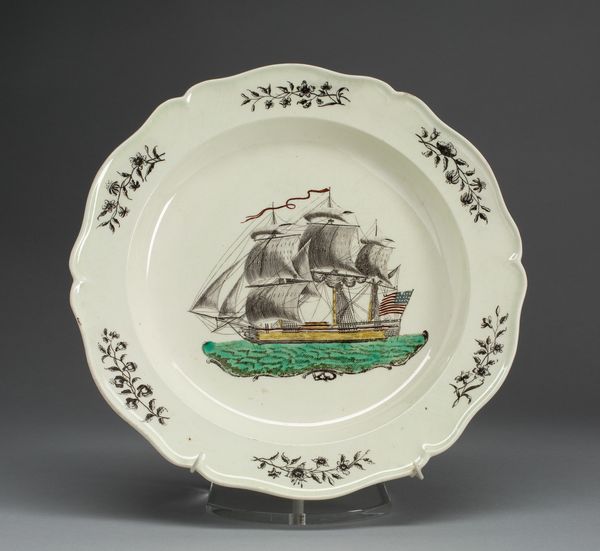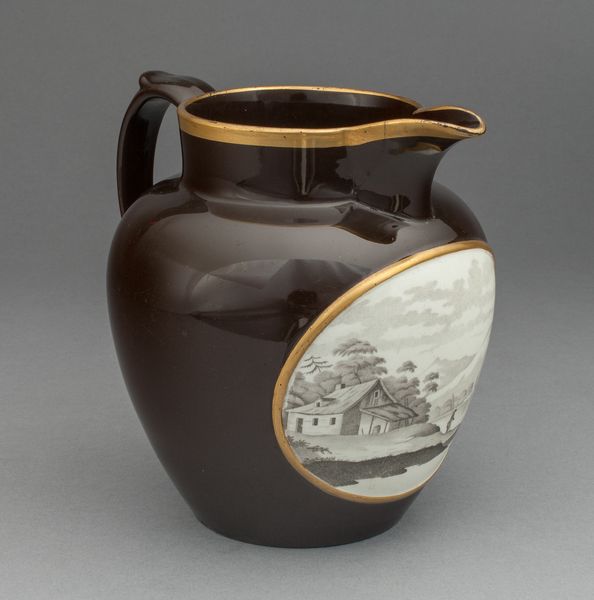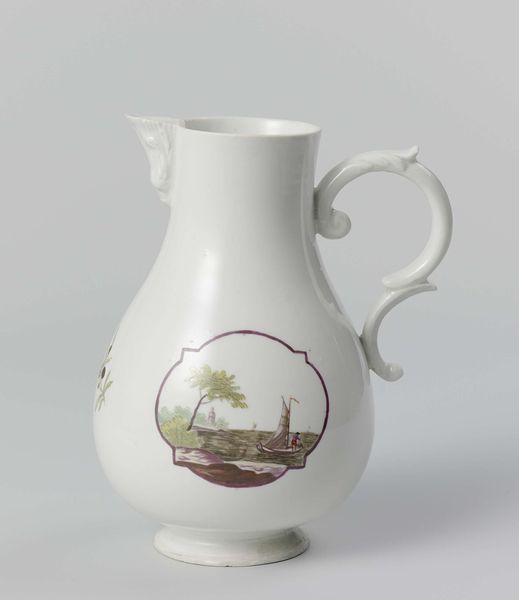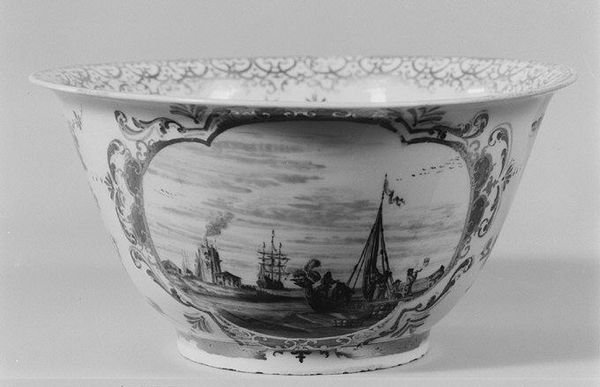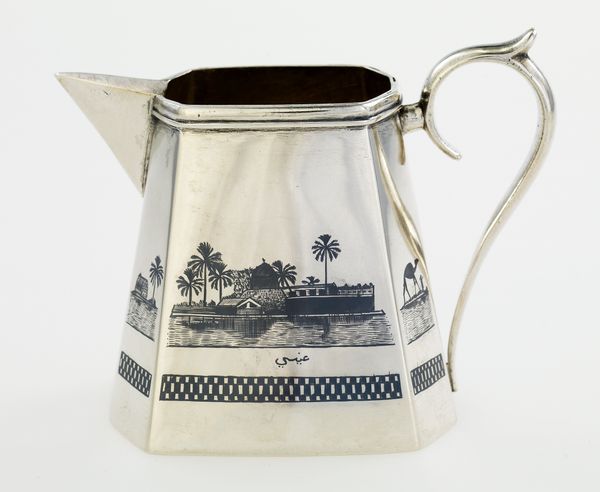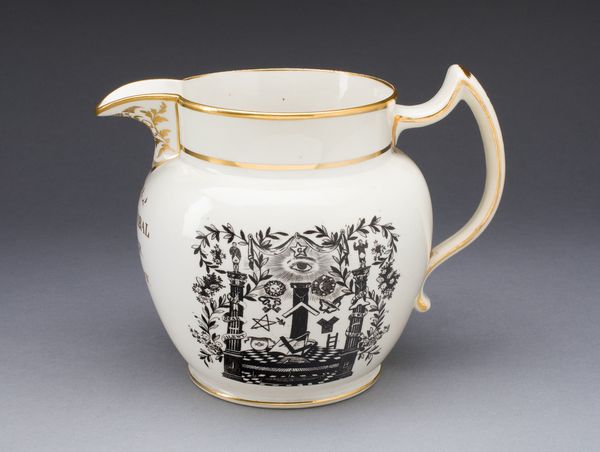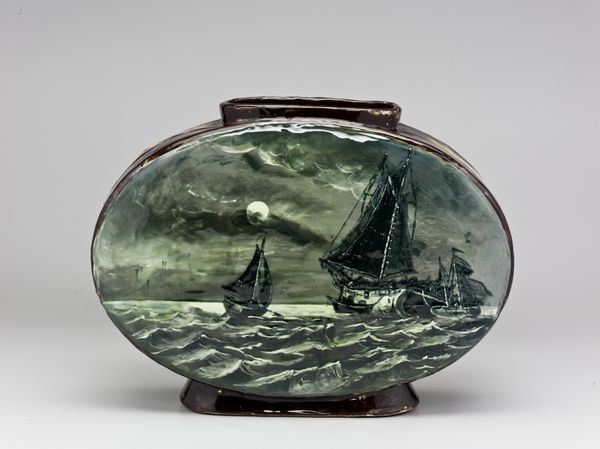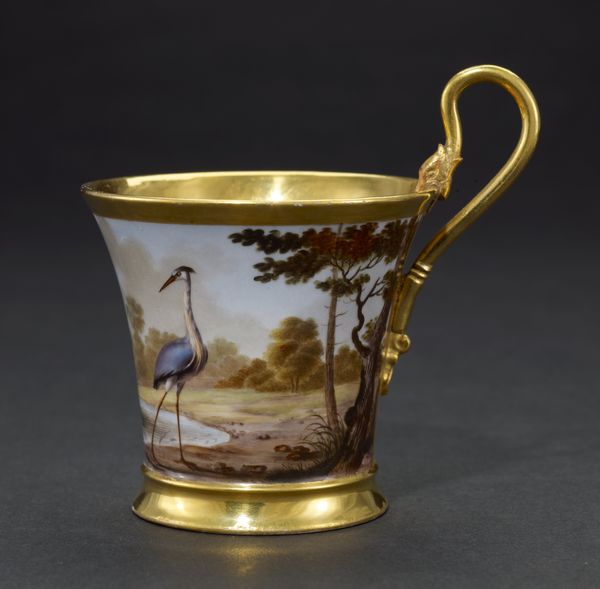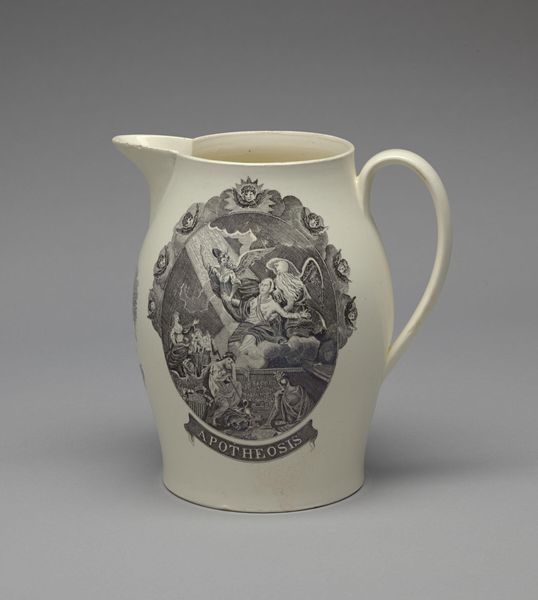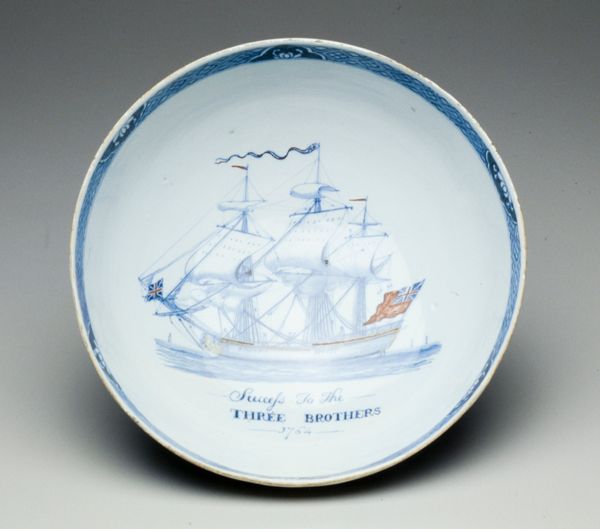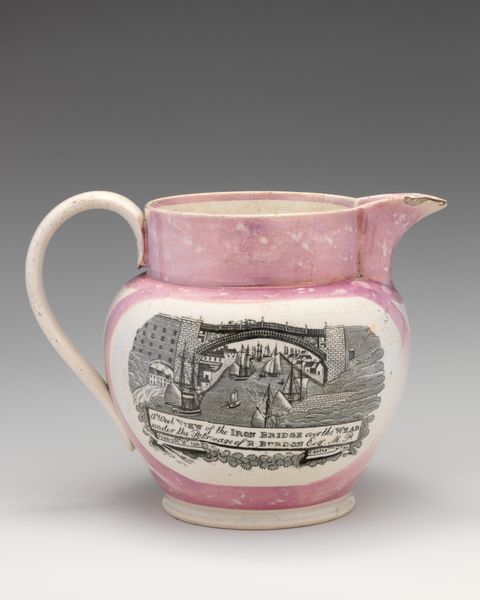
drawing, print, ceramic
#
drawing
# print
#
ceramic
#
england
#
ceramic
Dimensions: 9 1/2 x 8 5/8 x 5 1/4in. (24.1 x 21.9 x 13.3cm)
Copyright: Public Domain
Curator: Let’s take a look at this “Jug,” likely made around 1810, attributed to Herculaneum Pottery. It’s currently part of the collection at the Minneapolis Institute of Art. What strikes you first about this piece? Editor: Its starkness, I’d say. The pale ceramic offset by that meticulously etched ship. It gives a powerful sense of maritime endeavor contained within a commonplace domestic object. It asks interesting questions about production in its very material existence. Curator: Precisely! It’s an intriguing artifact that blends function and symbolic messaging. Produced in England during the height of their naval power, it reflects the socio-political dominance Great Britain held at the time. The detailed print of an American ship makes a very precise claim on its contemporary world. Editor: I'm really taken by the craftsmanship here, the means by which such a detailed print was rendered onto a ceramic surface at the time. The transfer printing, its durability—it’s meant for everyday use, and how this juxtaposes with the idealized image it holds. A truly democratic object using a mode of mass production to speak of maritime dominance. Curator: I see this jug also working within a historical and even personal context, a silent storyteller. Did the owner admire or resent the image on the jug? Was it displayed prominently, or was it merely functional, and why place such a provocative, competitive ship upon a ceramic vessel meant for tea or ale? Editor: I am certain the availability of this imagery for everyday ceramics points to new manufacturing technologies and new social frameworks of consumption for English society at this time. It points directly to class and accessibility through shifts in global trading practices. Curator: Indeed, so while the "Jug" appears straightforward, it’s layered with cultural significance. The intersection of artistry, industry, and international relations, captured in ceramic form. It invites us to think about the circulation of imagery and objects across geographical and social borders. Editor: A simple vessel made extraordinary by what it holds, materially and conceptually. I'm struck by how much historical context and contemporary industrial commentary is embossed in such a utilitarian shape.
Comments
minneapolisinstituteofart almost 2 years ago
⋮
Liverpool gained a reputation in the 18th century for elegant creamwares with transfer-printed scenes created for the lucrative trade with America. Among the images of American eagles and ships with American flags were apotheosis designs in honor of George Washington (1732-99), the first American icon, as seen here. Washington's qualities of fortitude, judgment, and sense of duty made him a constant inspiration to Americans and Europeans alike.
Join the conversation
Join millions of artists and users on Artera today and experience the ultimate creative platform.
